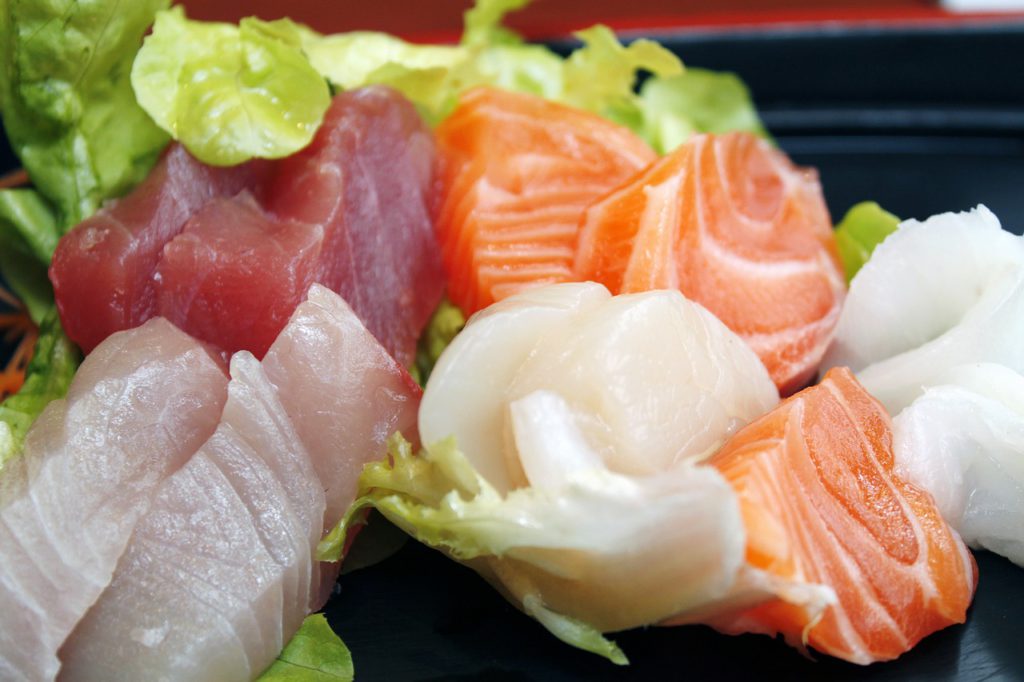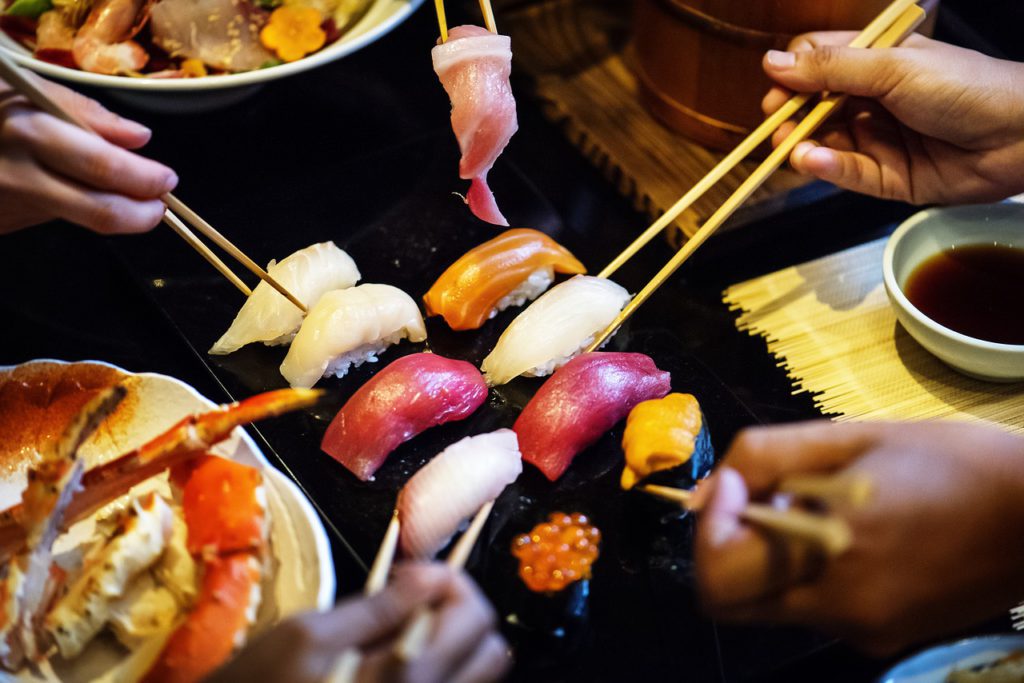The term Sashimi-grade fish is referred to a handful of selected seafood that can be eaten raw or lightly cooked. Sashimi, Sushi, Ceviche and Crudo are all common practices of preparing and eating raw fish. However, very different from one another.
Eating raw fish is often overlooked or not even considered in most parts of the world unless it’s ‘Sashimi’ or ‘Sushi’ grade and for good reason. Keep in mind not all fish can be prepared and eaten raw.
Freshly caught fish straight from the sea has to be closely monitored and regulated before being edible. So, where can you get your hands on Sashimi-grade fish?
Where to buy ‘Sashimi’ grade fish?
‘Sashimi’ grade fish can be store-bought from your local fishmonger or served and prepared by most restaurants that specialise in sashimi. If opting to purchase and prepare your own Sashimi please use a trusted fishmonger as eating raw seafood carries a certain level of risk.
Not all fish can be used for Sashimi. Commonly, salmon and tuna are the fish of choice as with other fish including surf clams, Halibut and Yellowtail.
Why does eating raw seafood carry a certain level of risk?
Parasites are the biggest problem when it comes to eating any type of raw seafood. Cod worms, Seal worms, and Tapeworms are the culprits here.
Cod worms are often found in Cod, Haddock, and Hake which is why we don’t see these types of fish served on a Sashimi menu. Seal worms often found in Salmon and Herring can be quite easily removed once we freeze these types of fish.
However, the biggest culprit out of the three is tapeworms which can be found in freshwater species of fish. Freshwater fish should be avoided for Sashimi altogether.
In saying that, there are some and I mean very few well farmed and regulated fish farms that do have fish that can be used for Sashimi and sushi. But in my personal opinion, I wouldn’t take the risk. Just do a quick google search on ‘Tapeworms’ and you’ll find out why (Warning!).
What to do before indulging in Sashimi?
The restaurant served Sashimi-grade fish go through a thorough process before it can be served onto your table. This process meets the golden standard of Sashimi grade or sushi grade fish.
However, if preparing Sashimi on your own please purchase your fish from a trusted fishmonger and follow the guidelines released by the FDA (Selecting and serving fresh and frozen seafood safely).
If correctly prepared, Sashimi grade fish can be some of the tastiest fish and can open up your food palette to a whole new world of experiences.



I have never seen anyone eat raw fish except in some survival series I watch on tv. I didn’t know it’s a thing like this but why not. I’ll definitely like to go e sashimi grade fish a try . I understand now why eating fish raw might be a very risky thing due to the parasite and all. I will check out with my local monger and hopefully he has something for me. Thanks and best regards.
Hi Henderson,
I’m surprised! Sushi and Sashimi is so common in my part of the world and I definitely do recommend you give it a go. Who knows, you might turn out to love it! All the best and be sure to let me know once you do try 🙂
Sashimi grade fish is a term for a handful of certain seafood that can be eaten raw or lightly cooked. To be honest I love fish but I much prefer to have it cooked s opposed to raw or just cooked I would worry that uncooked fish could have parasites inside that would definitely not appeal to me.
I’m sure there are people that like sushi bars and what they offer but as I said it’s not for me.
all the best
Fintan
Hi Fintan,
That’s absolutely fine. I guess Sashimi is not for everybody. Thanks for taking the time and leaving a comment 🙂
Hallo there Vinnie,
I was having a dinner party at my house when a friend of mine mentioned sashimi grade fish and I got really hooked to the idea since I am really in love with seafood and sushi is one of my favorite foods. Although the friend could not really explain what the food was all about, I thought I should research more about it so that I can learn more and see if I can consider getting into it.
The parasites issues is also a huge concern for me but the way you’ve explained it has given me peace. I think I am going to keep knowing the fish better and hopefully it is going to be added to my favorite foods lists pretty soon. Cheers.
Hi Dave,
That sounds awesome that you’re open to trying new foods and i’m glad you’re doing your research. I absolutely would recommend eating sashimi and of course sushi. But always find a good and trusted fishmonger if deciding to prepare on your own. On the other hand, there is so many great sashimi restaurants that you can indulge in!
I like learning new things about the foods I like to eat. I am a big fan of sushi and sashimi and my favorite is tuna and salmon. I found it interesting that sashimi should not be made from fresh water fish. I now know that I personally will not be preparing my own sashimi as there is too much risks in eating raw fish and would rather put my faith in the sushi restaurants I go to. Thank you for an interesting read.
I feel the same way, I would rather have a good sashimi restaurant prepare my meal than to do it myself. Selected freshwater fish can be eaten as sashimi, though the fish have to be well regulated and raised in a farmed environment. But in saying that freshwater fish do carry a higher level of risk in comparison to selected saltwater fish.
Thank you Robert for leaving some feedback!
Awesome write-up on sashimi-grade fish. About the eating of eating raw sea food, which many people and posts that I’ve read in the past warn against. I made some little research and discovered that the fish can safely be eaten raw – as in it’s been held for at least 48 hours at below-zero temps to kill any possible parasites – can you confirm this too?
Regards!
Hi Jordan,
Thanks for leaving some great feedback and yes that’s absolutely right. That is one of the many ways which can remove parasites and enable a selected few fish to be eaten raw.
I love eating salmon sashimi. For me, it has a clean taste compared to tuna which is has a stronger flavor for me. To get a really fresh salmon or tuna, we need to drive for 2 hours and get to the fish port at around 5 am. From there, we can buy as much as we like, have them cleaned and sliced in front of us. They already have set up tables and chairs if customers want to eat it immediately.
I have gain some learning about sashimi grade fishes today, especially the preparation and the risks from eating it. Your post just made me crave for it! Thanks for sharing this, I enjoy reading food blogs.
Hi MissusB,
That sounds like a trip worth while taking! For some 5am might be little too early for Sashimi but if you want the freshest then it’s worth it. Thank you for leaving some feedback on my post. Have a great day 🙂
I’ve always been wary about sashimi for home cooking due to the whole tapeworm issue. I had a relative that got tapeworms and I swore off since then. I’ve changed my mind. After reading this, I now know where to get it safely. The FDA link was super informative. Thank you for sharing!
Hi Maria,
That sounds horrible, hope your relative is ok now. Thank you for leaving some feedback 🙂
I caught a marlin in Cabo San Lucas and it is frozen. I’m thinking of thawing and preparing some ceviche from it. At this point I’m not so concerned with flavor as safety. I can tweak flavor later. Would this be a safe fish to use for ceviche?
Thank you!